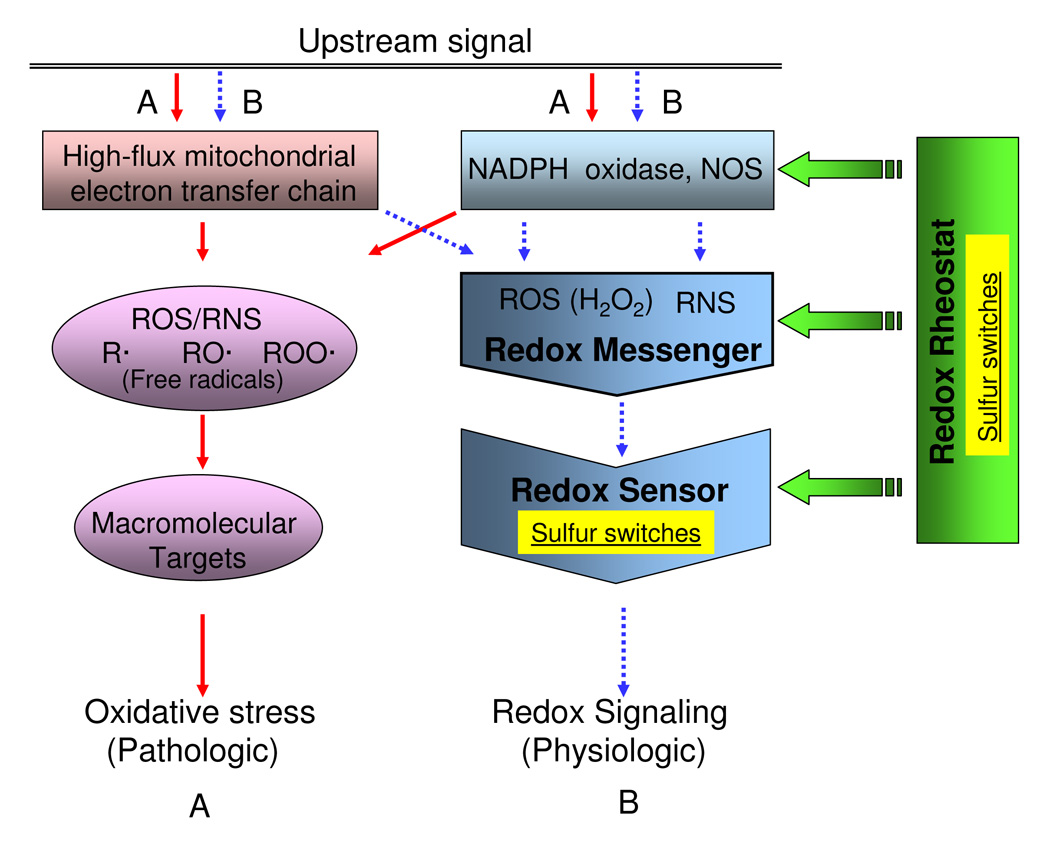Figure 3.

Sulfur switches can exist as "Redox Sensors" and as "Redox Rheostats" in generic redox circuitry models. Simplified models show (A) oxidative stress pathway (solid line) associated with high levels of ROS, RNS, and free radicals from mitochondrial dysfunction, NADPH oxidase activation, and nitric oxide synthase activation triggered by pathologic upstream signals. Redox signaling pathway (B, broken line) shows the process involving relatively low levels of diffusible reactive species associated with physiologic condition. In redox signaling, the small diffusible reactive species, termed "redox messengers" are generated by ROS/RNS sources and react with redox-sensitive macromolecules termed "redox sensors". These redox sensors are often sulfur switches, consisting of sulfur atoms within specific proteins. Sulfur switches also occur as regulatory elements, termed "redox rheostats", which are not needed to define the pathway but regulate its activity. The characteristics of these sulfur switches can differ because the redox sensors are integral components of pathways while the sulfur rheostats regulate activity.
